1. Town Crier

Before mass media, town criers were the human newsfeed of early America. They rang bells and shouted out official announcements, from royal decrees to local events. In many small towns, they were as trusted as the local newspaper would later become. With literacy rates rising and print media spreading, their voices faded into memory.
Today’s “breaking news alerts” might be the closest thing we have, but there’s no personal messenger in the town square anymore. The town crier represented both authority and approachability. Their public role kept communities informed in a pre-digital way that relied entirely on trust. When they disappeared, the news became less of a communal experience.
2. Switchboard Operator
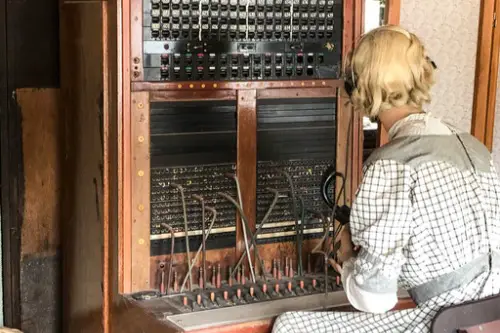
In the early and mid-20th century, almost every phone call passed through the nimble fingers of a switchboard operator. These workers—mostly women—connected people across towns, states, and countries using cords and plugs. It was part technical skill, part social grace, since they often knew entire communities by voice. But automated exchanges eventually made their quick thinking obsolete.
Today, there’s no human equivalent to that kind of phone mediation. Customer service chatbots or call routing systems vaguely echo the function, but without the warmth or personality. Operators didn’t just connect calls; they connected people in a literal and social sense. Their disappearance marked the moment communication went from personal to impersonal.
3. Knocker-Up
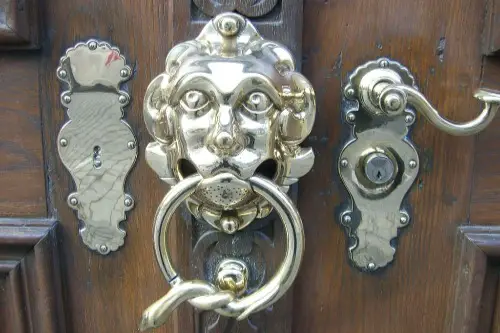
Before alarm clocks were reliable or affordable, early-morning workers relied on a person to wake them—literally. The “knocker-up” walked the streets with long sticks, tapping on bedroom windows to rouse factory workers and dockhands. It was common in industrial towns in the late 19th and early 20th centuries, especially in the U.S. and U.K. The job faded as affordable alarm clocks flooded the market.
There’s no real modern stand-in for someone whose entire job was to make sure you woke up on time. Smartphone alarms might serve the purpose, but they lack that personal accountability and trust. Imagine having someone who knew your schedule better than you did. The knocker-up’s extinction shows how convenience replaced community responsibility.
4. Lamplighter
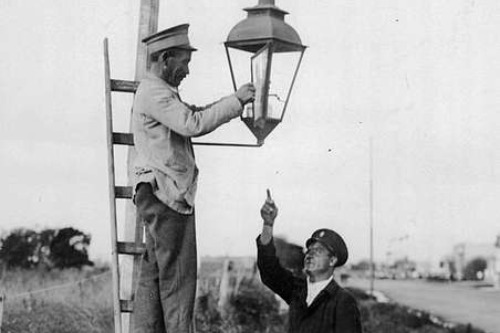
Before electric streetlights, American towns depended on lamplighters to illuminate the night. These workers climbed poles or used long wicks to light gas lamps one by one at dusk—and return to extinguish them at dawn. It was both a technical and trusted civic role, often done by the same person for years. When electricity became widespread in the early 20th century, the lamplighter’s glow faded out.
There’s nothing quite like that job today. Municipal lighting crews exist, but they don’t interact with the public or work by hand nightly. Lamplighters were part of the city’s pulse—visible symbols of order and safety. Their disappearance was a literal and metaphorical shift into a new kind of light.
5. Milkman
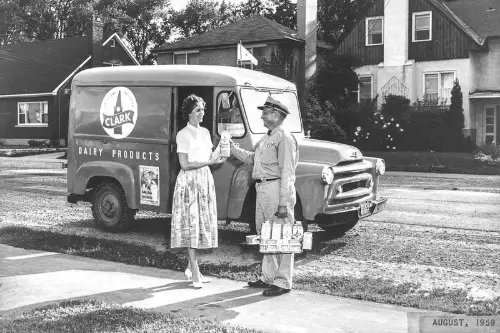
For much of the 20th century, the milkman was a fixture of American neighborhoods. He delivered fresh milk in glass bottles straight to your doorstep, often chatting with customers as he went. It was both personal and practical, ensuring perishables stayed fresh before home refrigeration was reliable. But once supermarkets and fridges took over, the milkman’s morning route ran dry.
While grocery delivery services exist today, they don’t replicate the milkman’s consistent personal service. His visits were routine, predictable, and woven into family life. The job combined logistics, trust, and neighborliness in a way apps just can’t match. Losing the milkman meant losing a small daily ritual of connection.
6. Elevator Operator
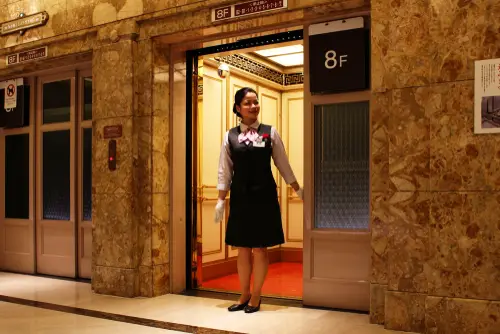
Before automation, elevators were tricky—and sometimes dangerous—to use. Operators manually controlled the car’s speed and stopping point, ensuring passengers traveled smoothly between floors. They were often uniformed, polite, and professional, turning a mundane ride into a small social interaction. But by the 1950s, automatic elevators made the role unnecessary.
No modern job involves quite the same mix of precision and courtesy. Today’s elevators run on silent efficiency, with no human touch to guide them. Elevator operators were early ambassadors of modernity—trusted with both safety and style. Their extinction shows how progress often comes at the cost of human charm.
7. Pinsetter
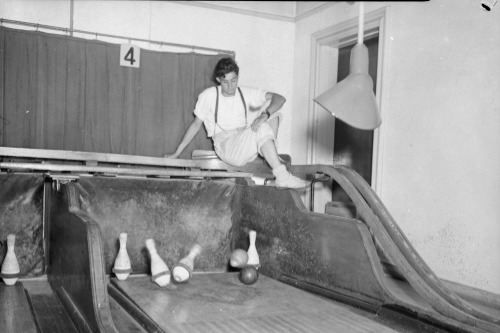
Before bowling alleys became fully automated, pinsetters were the muscle behind the fun. Usually teenage boys, they reset pins, returned balls, and dodged flying strikes—sometimes for hours. It was loud, fast-paced, and dangerous work, but it kept America’s favorite pastime rolling. When automatic pinsetters debuted in the 1940s, the human version vanished quickly.
Today’s bowling alleys hum with mechanical precision, but none need a human crouched behind the lanes. There’s no modern job that involves that same combination of physical skill and chaos. Pinsetters were part of the live energy of the game itself. Their disappearance turned a rowdy pastime into a cleaner, quieter experience.
8. Telegraph Operator

Before telephones were everywhere, the telegraph was the backbone of long-distance communication. Operators translated messages into Morse code, sending dots and dashes across vast distances. They were vital during wars, for news agencies, and for railroads keeping track of trains. The spread of voice communication and computers eventually made the role redundant.
No modern worker fills that exact niche of human code translation and network operation. Software handles data transmission invisibly now, without the same human skill or rhythm. Telegraph operators embodied a moment when communication was still tactile and audible. Their obsolescence marked the dawn of instant, invisible connection.
9. Leech Collector

In early American medicine, leeches were prized for bloodletting treatments. Leech collectors waded into marshes or ponds, often using their own legs as bait to attract the slippery creatures. It was messy, dangerous, and surprisingly valuable work for its time. But as modern medicine advanced, both the practice and the profession dried up.
While biomedical researchers do occasionally use leeches today, no one harvests them by hand for a living. Modern equivalents are lab technicians or pharmacists, but their work couldn’t be more different. Leech collecting belongs to a world where medicine was physical and immediate. It’s a reminder of how far science—and hygiene—have come.
10. Iceman
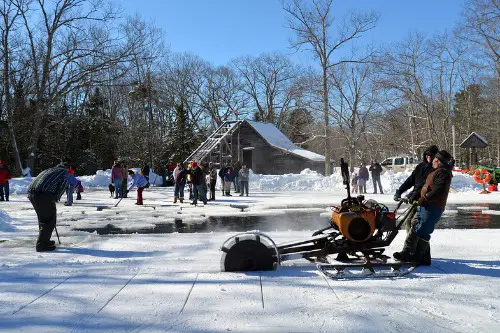
Before refrigerators became standard in American homes, icemen were daily lifesavers. They hauled massive blocks of ice from icehouses or delivery trucks into kitchens, keeping perishable food safe for families. This was grueling, cold, and heavy work—often starting before dawn. When electric refrigeration took off in the 1930s and ’40s, the iceman melted into history almost overnight.
What’s fascinating is that there isn’t a direct modern version of the iceman’s neighborhood presence. Sure, logistics workers and delivery drivers exist, but none have the same intimate household connection. These men were part of the daily rhythm of life, especially in cities. Their disappearance marked the quiet end of a truly human-centered service era.
11. Lector

In cigar factories during the late 19th and early 20th centuries, lectors were professional readers hired to entertain and educate workers. They stood on raised platforms, reading newspapers, novels, or political essays aloud to rows of cigar rollers. The job made factory work more bearable—and sometimes more radical, as readings often included social commentary. With the rise of radio and recorded entertainment, lectors lost their audience.
There’s no true modern equivalent to a lector’s blend of education, labor, and performance. Podcasts or audiobooks might come close, but they lack the live, communal aspect. Lectors created shared intellectual spaces in blue-collar workplaces. Their decline symbolized a shift from collective listening to individual media consumption.
12. Fuller
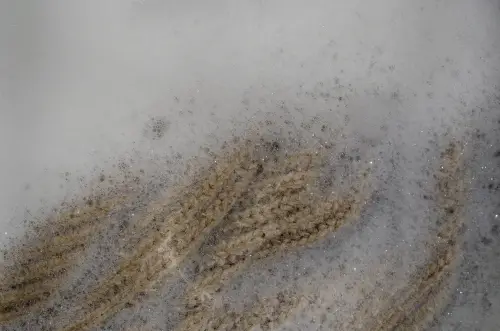
Before industrial laundries, fullers cleaned and thickened woolen cloth by pounding it in water mixed with clay or urine. It was a centuries-old craft that ensured fabric quality before modern machinery took over. Early American textile production relied heavily on their skilled labor. Once steam-powered mills and chemical detergents emerged, fullers literally washed out of the job market.
No modern laundry worker or textile technician does quite what a fuller did. Machines now automate every part of the process with chemical precision. Fullers worked by touch, instinct, and repetition—turning raw fabric into something wearable. Their extinction marks the point where craftsmanship gave way to mass production.
This post 12 Once-Essential American Jobs That Don’t Even Have Modern Equivalents was first published on American Charm.


